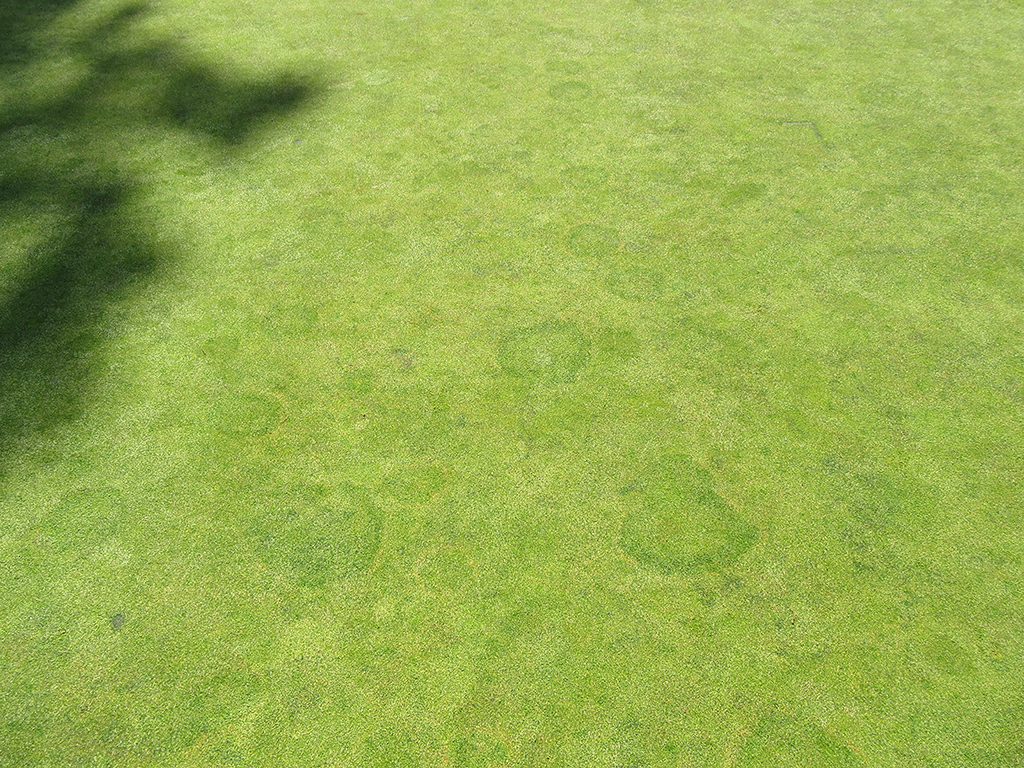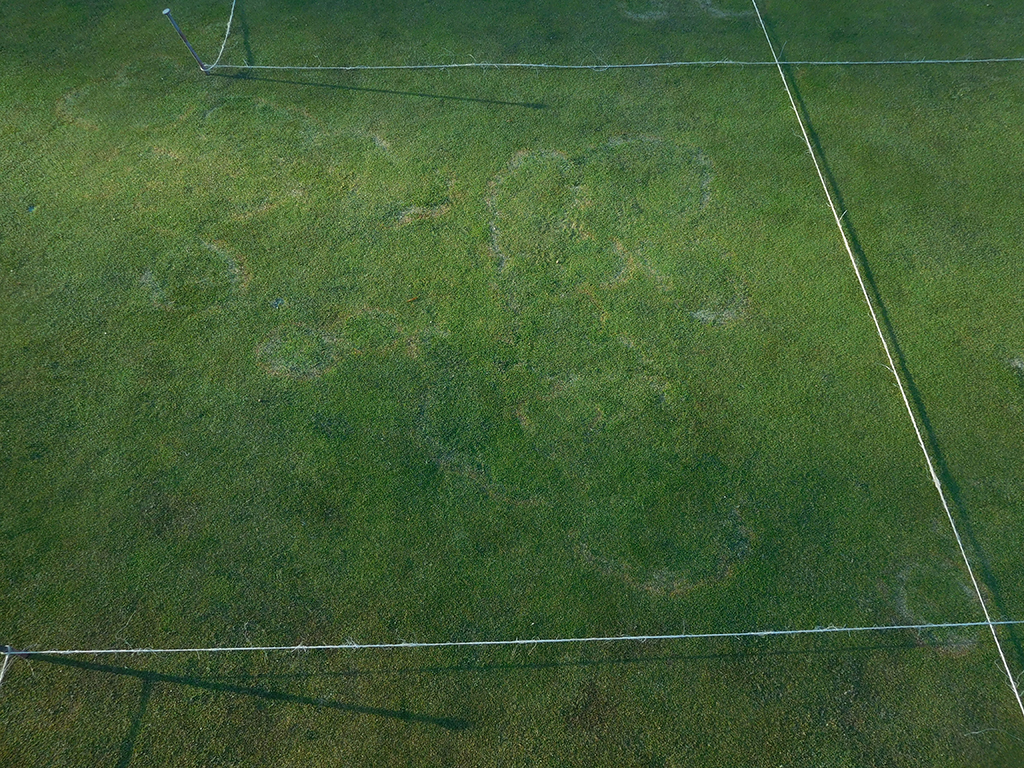The Spring Ring of Poa annua Greens
Every spring it seems like timing seedhead suppression applications on Poa annua greens comes with questions, no matter where you are. Many times similar questions are asked about when to start disease control program on Poa annua greens. Historically, the most problematic and well documented diseases of Poa annua on greens include: anthracnose, summer patch and various Pythium diseases and a few others. That was true until about 2006 when a new serious disease of Poa annua greens showed up. The first time I saw brown ring patch (caused by Waitea circinata var. circinata) in the field was at an awesome club with really good Poa annua greens just north of Washington, DC in Maryland. I had seen photos from Dr. Frank Wong while he was in California but never had I seen in person. This disease kept showing up in new locations and we worked to get disease reports in Pennsylvania, Virginia and West Virginia. Since this time, we have learned a lot about this disease and tend to see less and less of it. Recently, I have seen and received texts about Brown Ring Patch activity on Poa annua greens.
Identification/Location
This disease tends to show up late in winter through the middle of June in various climates. It’s rare but I have also seen it in the autumn a few times. The yellow to orange rings show up in patches- this differs from other Rhizoctonia diseases that form more circular patches without interconnected crescent shape margins. It starts out as yellow rings that are 0.2-2 inches in width and can reach a few feet in diameter. I have only seen this disease produce mycelium in the field a few times and it requires ideal weather for it. As the disease progresses, the rings turn bright orange and brown. Similar to fairy ring, the outside of the ring can “green up” and is likely due to a breakdown of organic matter and a plant available nitrogen release. This pathogen can significantly injure and pit Poa annua greens. While it has been reported on bentgrass it is not as common on bentgrass as Poa annua in the United States.
Why did this “Newer” Rhizoctonia show up?
While this disease is similar to your classic “Rhizoctonia diseases” which cause significant diseases of most crops world-wide, it broke a few rules. Observationally, brown ring patch was more severe on drier areas of greens and leaner greens. For example, if a golf course had 20 greens and were comprised of 16 native soil push up with sand topdressing on top and 4 USGA sand based greens, this disease would be worse on the sand based greens. Could it be that more sand topdressing and more drainage in greens was creating an environment where this fungus became more active? At this time frame too more and more golf courses began to use seedhead suppression more aggressively in the spring time. We have limited data on the use of plant growth regulators on brown ring patch severity but our preliminary data shows that regulators used to suppress seedheads like Ethephon (Proxy) or Embark (no longer available for sale) can make the incidence and severity worse. We may never know the reason, like many diseases, it is likely complex.
Preventive Control is Key
If you get symptoms of this disease on greens in the spring, it can be slow to fully recover. This is due to cool night time temperatures which typically prevent full dormancy break as well as plant growth regulation that is applied to suppress seedheads of Poa annua. Slightly increasing nitrogen fertilizer can aid to abate symptoms.
The Top Preforming Fungicides In our trials in Pennsylvania and New Jersey Include:
- Azoxystrobin (Heritage, Heritage Action, and mixtures with this active ingredient like Headway and Briskway)
- Flutonil (Prostar, others)
- Polyoxin-D (Endorse, Affirm)
- Pyraclostrobin (Insignia and mixtures with this active ingredient like Lexicon and Navicon)
Additionally some of your “old standard” fungicides to apply in the spring months like iprodione, phosphites, thiophanate-methyl and low rates of chlorothalonil are basically ineffective against this pathogen. That was one of the reasons there was a lack of control when we began to learn more about this disease in the 2006-2010 time frame.
One common question I receive with fungicide control of this disease is post application irrigation requirements. Our data, and it is limited, indicate that it depends on the fungicide. We saw little to no difference with azoxystrobin (applied as Heritage TL) when it was left to dry versus 0.1 inch of post application irrigation, however with Triticonazole (Chipco Triton Flo) was saw it improve control with 0.1 inch of water applied following application. It is important to point out there was a large range in the activity among DMI (strerol inhibitor) fungicides. Triticonazole was shown to one of the more active materials compared to the others. Generally speaking the aforementioned fungicides (Azoxystrobin, Pyraclostrobin, Flutonil and Polyoxin-D) were the most effective fungicides in our trials.
For additional information Brown Ring Patch:
https://turfblog.rutgers.edu/wp-content/uploads/2014/04/GCM-MAR-2014_brown-ring-patch.pdf
https://apsjournals.apsnet.org/doi/10.1094/PDIS-04-10-0274
https://apsjournals.apsnet.org/doi/10.1094/PDIS-93-9-0962A

